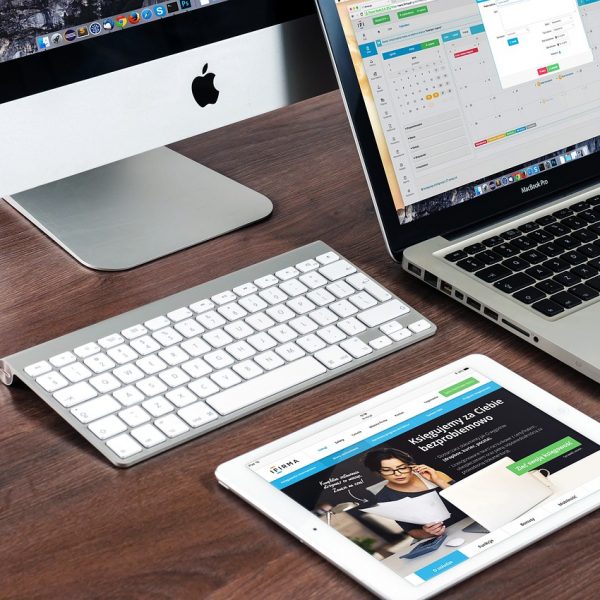Google held its annual I/O developer conference in May 2022, where it unveiled its much-anticipated Pixel Watch alongside an array of other new Pixel devices. From budget phones to advanced earbuds, Google showcased its vision for the future of its consumer hardware ecosystem.
Here is an in-depth look at all the new product announcements and what they mean for Google’s hardware strategy going forward:
Pixel Watch
The showstopper at Google I/O 2022 was undoubtedly the reveal of the Pixel Watch – the first smartwatch designed and built directly by Google. Rumored for years, the Pixel Watch aims to showcase Google’s vision for wearable technology.
The Pixel Watch features a circular domed design with an always-on OLED display. It runs the new Wear OS 3.5 operating system and leverages Google’s acquisition of Fitbit, with heart rate, activity and sleep tracking built-in.
Google promises deep integration with Pixel phones for notifications, Google Assistant voice commands, Google Wallet payments and more. The watch is also compatible with Android and iOS devices.
By finally launching its own smartwatch, Google is signaling its intent to compete head-on with the Apple Watch. The Pixel Watch marks a new chapter in Google’s escalating hardware ambitions.
Pixel 6a
Following the success of last year’s Pixel 6 and 6 Pro phones, Google announced the Pixel 6a – a new budget addition to the Pixel 6 family starting at $449.
The Pixel 6a retains many of the flagship features of the Pixel 6, including the fast Google Tensor chip, excellent camera performance, and polished design – but at a lower price point.
Key specs include a 6.1-inch OLED display, dual 12MP rear cameras, 128GB of storage, 24-hour battery life and an in-screen fingerprint sensor. The Pixel 6a comes in Chalk, Charcoal and Sage color options.
The Pixel 6a indicates Google’s plan is to scale the Pixel 6 formula down to cheaper price brackets and bring flagship-caliber experiences to budget buyers.
Pixel Buds Pro
Google’s new Pixel Buds Pro are the company’s first attempt at premium wireless earbuds designed to rival Apple’s AirPods Pro. They leapfrog Google’s previous Pixel Buds models.
The Pixel Buds Pro promise rich, immersive sound powered by a new 6-core audio chip and spatial audio support. They also feature active noise cancellation for the first time in Pixel Buds to dampen ambient sounds.
Touch controls, transparency mode for hearing surroundings, a 31db noise reduction mode for loud environments, and Find My Device support also make the cut. The Pixel Buds Pro last up to 11 hours per charge.
Available in Summer 2022 starting at $199, the Pixel Buds Pro signal Google is getting serious about its hearables lineup and aiming for a bigger slice of the wireless earbuds market.
Pixel Tablet
Google teased its upcoming Pixel Tablet – the company’s first Android tablet since 2015. The tablet is scheduled to launch in 2023.
Details remain light, but Google shared the Pixel Tablet will feature an all-new Tensor G2 chip. It’s expected to integrate deeply with Google services and other Pixel devices, similar to Apple’s ecosystem approach.
By re-entering the tablet arena, Google hopes to offer an Android alternative to the popular iPad. The tablet’s success may hinge on whether Google can expand the Android app ecosystem to properly support larger screens beyond just smartphones.
Google Pixel Notepad
While not officially announced, strong rumors indicate Google is prepping a Pixel Notepad foldable phone for release in 2023. The clamshell style foldable would compete with the Samsung Galaxy Z Flip series.
Purported details point to a more affordable price under $1400, stylish design, Tensor chip, dual cameras, and a cutting-edge foldable OLED display with thin glass cover.
A foldable Flip-style phone could be Google’s ticket to revitalizing interest and driving flagship Pixel sales. The novelty factor may attract buyers seeking something fresh and differentiated.
Nest Doorbell and Cameras
Google announced upcoming additions to its home security product portfolio under the Nest brand, including a new Video Doorbell and Pro Cameras.
The second-gen Nest Doorbell will offer 24/7 recording, along with on-device machine learning to distinguish people, animals, vehicles and packages.
Meanwhile, the weatherproof Nest Cam Pro and Nest Cam with floodlight boast enhanced video quality, 3D motion sensing, emergency alerts and smarter detection alerts to cut down on false triggers.
Google’s continued investment in Nest hardware shows its commitment to growing its presence in the home automation space and competing with leaders like Ring, Arlo and Wyze. More integrations between Nest and Google’s services seem inevitable.
Android 13 Beta 2
Google unveiled the public beta version of its upcoming Android mobile OS upgrade, Android 13. Among the highlights are increased privacy options, broader support for different devices and form factors, and productivity enhancements.
Users can try the Android 13 beta now via Google’s developer site. The stable version of Android 13 is scheduled to launch later in 2022.
Based on the betas, Android 13 represents an incremental but meaningful update. Expanding support for large screens hints at Google’s tablet ambitions, while tighter privacy controls aim to protect sensitive user data.
Android 13 will come standard on all new Pixel phones and roll out widely to other Android devices through 2022 and into 2023.
Google Pixel 6a and 6 Series Updates
Alongside launching the Pixel 6a, Google reaffirmed its plan to support the flagship Pixel 6 and 6 Pro with at least 5 years of software and security updates. These devices will continue evolving over time.
Google also announced upcoming functionality upgrades focused on improving speech recognition, enhancing video calls, and expanding availability of Direct My Call, a new Pixel feature that skips phone tree menus.
Commitments to long-term support paired with useful new features should broaden the appeal of Google’s premium Pixel 6 range. The phones look well-positioned among 2022 flagships.
Wear OS 3.5 for Smartwatches
Google gave a preview of Wear OS 3.5, the next major version of its smartwatch platform built jointly with Samsung. It will debut on the Pixel Watch before coming to other watches.
Wear OS 3.5 refinements include app updates surfaced on the watch face, quick access to smart home controls, easier device pairing, an onscreen keyboard for typing, andunified health/fitness tracking.
Overall, Wear OS 3.5 aims to make key tasks like messaging, smart home automation and activity tracking more seamless when living life on your wrist.
Google Meet Improvements
Google Meet, the company’s video conferencing service, received several enhancements focused on more natural video calls. Portrait restore uses AI to keep your face centered properly. Portrait light adjusts lighting on your face, while Noise cancellation removes distracting sounds.
Google also announced Companion mode in Meet for more engaging hybrid meetings. Plus,Spatial view for more dynamic user representations in virtual spaces.
These upgrades help Google Meet close the user experience gap with rival platforms like Zoom and Microsoft Teams. Smoother video interactions will aid Meet’s push for a bigger piece of the video call market.
The future of Google’s hardware ecosystem clearly lies in tighter integration between its growing array of connected devices and services. Whether it be the Pixel Watch’s deep pairing with Android phones or Nest Cams tying into Google smart home apps, Google is following Apple’s lead in building an ecosystem.
Strong foundations in smartphone hardware and operating systems now provide Google the base to scale into new product categories like wearables and tablets. If Google can get the software integration right, its hardware lineup has potential to blossom into a cohesive family of consumer gadgets underpinned by Google’s AI, apps and services. The roadmap shares striking similarities to Apple’s playbook.
With its robust ecosystem, Apple still maintains a strong competitive edge that won’t disappear overnight. But Google’s long-term hardware strategy is now evident. Google I/O 2022 spotlighted a company ready to continue challenging Apple’s dominance across every device category. The battle of the ecosystems will be fascinating to watch in the years ahead.




